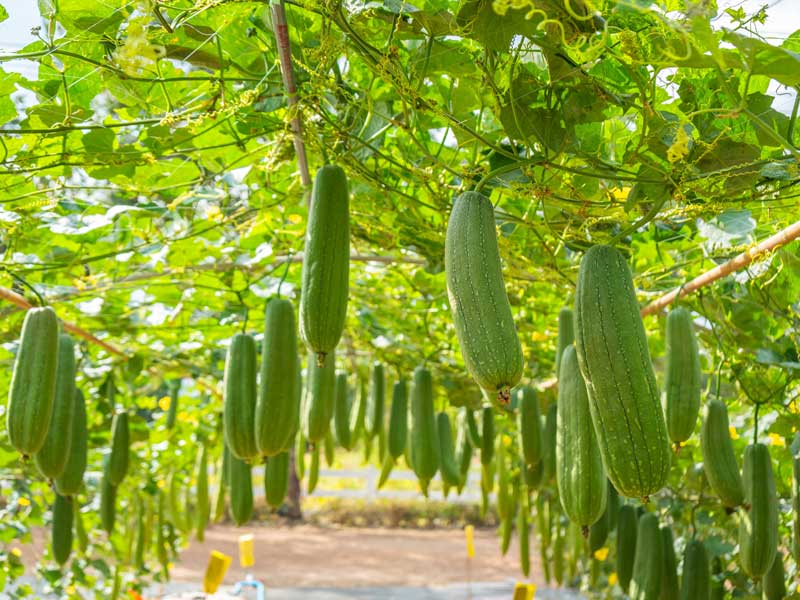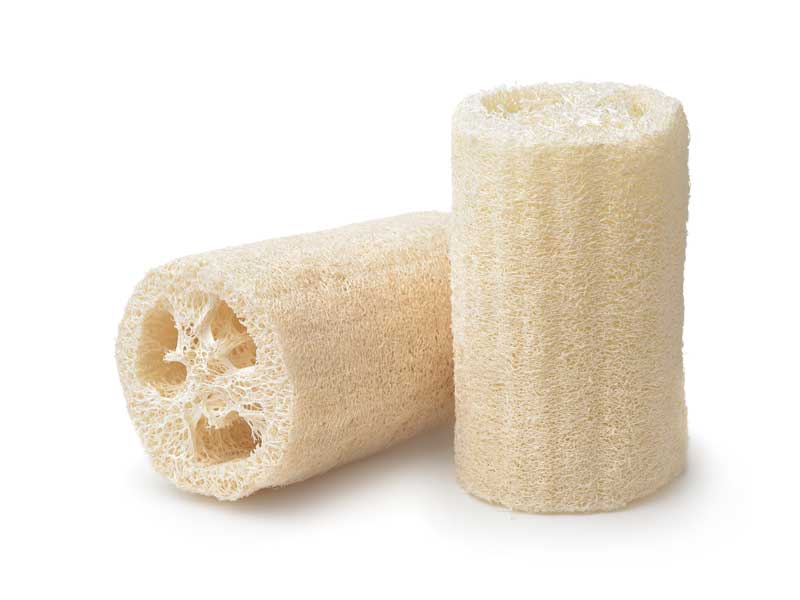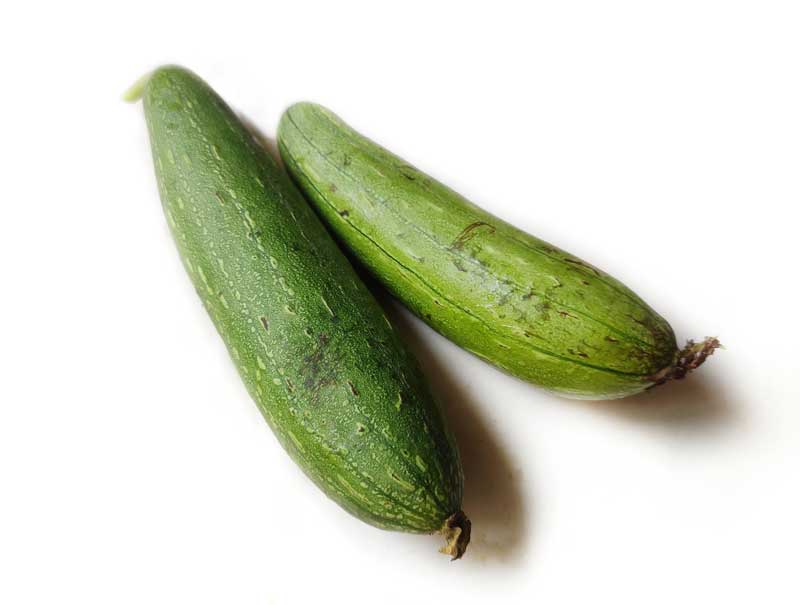Luffa, also known as sponge gourd or ridge gourd, is a warm-season vegetable that’s popular in Asian cuisine. While many gardeners associate luffa with bath sponges, young fruits are tender and edible—especially the long, ridged varieties common in Indian and Southeast Asian dishes. In this post, we’ll explore how to grow both long and short luffa in Australian gardens, from seed to harvest.
What is Luffa?
Botanical Name: Luffa aegyptiaca (also known as Luffa cylindrica)
Also Known As: sponge gourd, ridge gourd, Chinese okra, loofah, turiya (Hindi), petola (Malay), si gua (Mandarin)
Luffa is a fast-growing vine in the cucurbit family. It produces lobed leaves, tendrils, and yellow flowers that bloom in summer. Fruits are long and cylindrical, often with deep ridges (long type) or smooth (short type). When harvested young, luffa is a mild, spongy vegetable. Left to mature, the inner fibres harden into a natural sponge.
Quick Growing Info
| Category | Details |
|---|---|
| Plant Type | Annual climbing vine |
| Climate Zones | Temperate, Subtropical, Tropical |
| Sowing Season | Oct–Jan (Temperate/Subtropical), Dry Season (Tropical) |
| Days to Harvest | 60–70 days (young), 110–130 days (sponge) |
| Spacing | 60–100 cm apart |
| Support Needed | Yes – tall trellis or arch |
How to Grow Luffa from Seed
Luffa needs warm weather and a long growing season. Soak seeds overnight before sowing to improve germination. Plant 2–3 cm deep in well-drained, fertile soil once daytime temps reach 22°C+. In cool areas, start seeds indoors and transplant after frost.
Provide sturdy vertical support from the start. Luffa vines grow quickly and can easily reach 2–4 metres in length.
Water deeply 1–2 times per week and mulch to retain soil moisture. Apply a liquid seaweed feed or potassium-rich fertiliser once flowering begins.
Pollination Tips
Like other gourds, luffa has male and female flowers. Bees and insects usually do the job, but in low-pollinator areas, hand-pollination may be needed using a cotton bud or soft brush.
Common Growing Problems
| Problem | Likely Cause | Solution |
|---|---|---|
| Fruits falling off early | Poor pollination | Hand pollinate early morning |
| Yellowing leaves | Overwatering or poor drainage | Water only when top soil is dry |
| Powdery mildew | Humidity and poor airflow | Space vines out and spray with eco-fungicide |
When and How to Harvest

Harvest young luffas when they’re 20–30 cm long, tender, and still bright green. The skin should scratch easily with your fingernail. For sponge use, let the fruit fully mature and dry on the vine. The skin will turn brown and crack—then peel it to reveal the fibrous sponge inside.
Use secateurs to cut the fruit cleanly with a bit of stem left. Frequent picking encourages more fruit.
How to Cook Luffa
Young luffa is similar to zucchini in flavour. It soaks up seasonings and softens during cooking. Try:
- Stir-fried Luffa: Sauté slices with garlic, egg, and sesame oil.
- Indian Turai Curry: Cook with mustard seeds, turmeric, onions, and lentils.
- Filipino Ginisang Patola: Add to misua noodles and broth with pork or prawns.
- Luffa with Coconut Milk: Simmer with coconut, chilli, and curry leaves.
How to Make Luffa Sponges
 Peel dried luffas and shake out the seeds. Rinse well and sun-dry until crisp. Cut into sponge-size pieces for natural exfoliating body sponges or kitchen scrubbers. Store in a dry, airy place to prevent mould.
Peel dried luffas and shake out the seeds. Rinse well and sun-dry until crisp. Cut into sponge-size pieces for natural exfoliating body sponges or kitchen scrubbers. Store in a dry, airy place to prevent mould.

